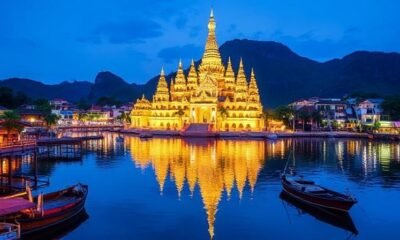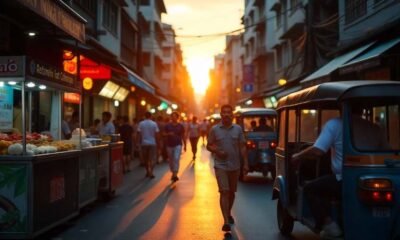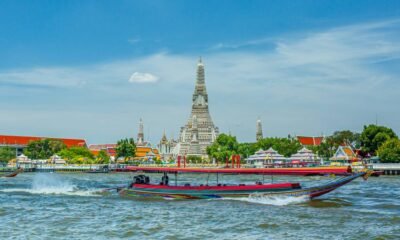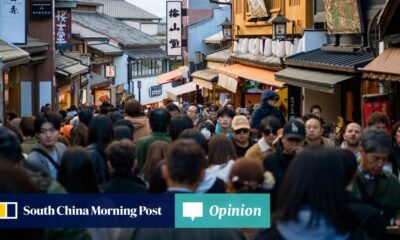Asia Travel Pulse
The Rise Of Green Tourism In Hanoi, Vietnam: How The City Is Pioneering Sustainable Travel
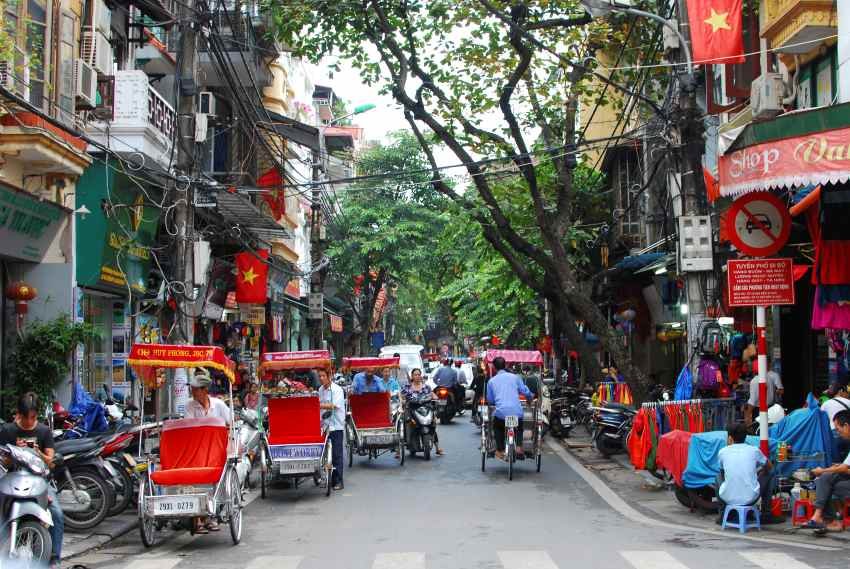
Tuesday, July 22, 2025
Hanoi, the capital of Vietnam, is making a surprising effort to become a global hub of green tourism. As increasing numbers of tourists opt for environmentally friendly travel, the city is promoting sustainable tourism to protect its rich cultural heritage and the environment, while at the same time expanding its reputation as a green tourism locale. From 2026, a major policy change will see Hanoi prohibit single-use plastics in all hotels and tourist sites as the Vietnamese capital takes a stand for a cleaner and greener future. This policy is forecast to help the innovation of Hanoi’s tourism and is appropriate with trends in the nation and around the world when tourists are willing to attach special importance to friendly environments and sustainable development.
The Green Revolution: Hanoi’s Plan for a Plastic-Free Future
Hanoi’s green tourism initiative is poised to tackle one of the most significant environmental concerns facing the world today: plastic waste. The city’s ambitious plan will gradually phase out single-use plastics, starting with common items like toothbrushes, razors, plastic bags, and miniature toiletry bottles. Hotels and tourist sites across the capital will no longer be allowed to use such products starting in 2026, a measure that is expected to make a significant impact on reducing the city’s plastic footprint.
By 2031, Hanoi plans to extend this ban to include a full halt on the production and import of single-use plastics, including microplastic-containing items. The city also aims to phase out free plastic bags in markets and convenience stores as part of its broader strategy to combat plastic pollution. These actions are being hailed as a necessary step toward sustainable tourism, as experts agree that environmental responsibility is no longer just a trend but an essential practice for the future of global travel.
Supporting Businesses Through the Transition
While the green shift is being celebrated, experts have acknowledged the challenges that small and medium-sized businesses may face in adopting these sustainable practices. The majority of Hanoi’s tourism sector is made up of smaller enterprises with limited resources to implement eco-friendly upgrades. In recognition of these challenges, government officials are calling for tax incentives, access to green credits, and enhanced communication support to help businesses transition smoothly into more sustainable operations.
The green transition is already being piloted in the downtown Ring Road 1 area of Hanoi, where cafes, restaurants, and beverage outlets are testing plastic-free practices. These initiatives are a critical step in encouraging both businesses and consumers to embrace environmentally friendly behaviors. The success of these pilot programs is expected to be a model for further expansions throughout the city, setting Hanoi apart as a modern, eco-conscious destination.
Developing Green Tourism Products and Destinations
Beyond eliminating plastic waste, Hanoi is also focused on cultivating sustainable tourism products and destinations that align with its green vision. One such initiative is the promotion of the Ba Vi mountainous region, often referred to as the “green lung” of western Hanoi. This area, known for its pristine forests, cool climate, and rich ethnic culture, is quickly becoming a key player in the city’s sustainable tourism offerings.
The Ba Vi region offers visitors a chance to engage in various eco-friendly activities such as staying with the Dao ethnic community, enjoying herbal baths, participating in wellness retreats, and embarking on trekking tours to sacred sites like the Thuong Temple and the K9 relic site. These experiences provide visitors with an authentic, nature-centered getaway while supporting local communities and preserving the environment.
Innovative Urban Green Tourism Initiatives
Urban green tourism is also on the rise in Hanoi. The city is introducing innovative, environmentally conscious tours that aim to reduce the ecological footprint while highlighting the city’s cultural heritage. Electric car rides through the Old Quarter, cycling trips to ancient villages like Co Loa and Bat Trang, and walking tours focusing on Hanoi’s French colonial architecture are just a few examples of creative green tourism offerings. In the Hoan Kiem district, 30 heritage sites have adopted a smoke-free tourism model to offer cleaner, healthier environments for visitors.
These green initiatives are part of Hanoi’s broader effort to promote ecotourism within urban settings, allowing visitors to experience the city’s charm in a more sustainable way. With this growing trend, Hanoi is positioning itself as a model of eco-conscious urban tourism.
Education and Awareness Campaigns
Raising awareness about environmental issues and fostering eco-friendly behaviors among both locals and tourists is a key component of Hanoi’s green tourism plan. The city has launched training programs focused on waste reduction, wildlife protection, and sustainable tourism practices. These programs are designed to equip both industry professionals and the public with the knowledge and skills to support Hanoi’s green transition.
Additionally, the city is working on the development of a green tourism evaluation framework that will assess destinations based on their energy consumption, biodiversity protection efforts, and community engagement. This framework is expected to serve as a guide for tourism operators and destinations to measure their sustainability progress and receive support for their green initiatives.
Proven Success in Eco-Tourism Models
Hanoi’s green tourism efforts have already yielded tangible results in some areas. The Huong Son eco-tourism site, for example, has demonstrated that eco-tourism can be both environmentally beneficial and economically viable. With tourism and services contributing nearly 35% to the local economy, the Huong Son model proves that sustainable tourism can drive economic growth while preserving the natural environment.
As Hanoi continues to promote green tourism, it is clear that sustainable travel is not only a goal but a reality. With eco-friendly policies in place and an expanding range of green tourism products, the city is setting an example for the global travel industry. By fostering a greener tourism model, Hanoi is not only enhancing its reputation as an environmentally conscious destination but also ensuring long-term competitiveness in an industry that is increasingly driven by sustainability.
Conclusion: A Greener Future for Hanoi’s Tourism
To conclude, green tourism in Hanoi is a game-changing approach of focusing on travel and tourism in the city. With a clear roadmap on how to reduce single-use plastics, promote modern sustainable tourism products, and educate about sustainable tourism services, Hanoi is well on its way to a more ‘green’ tourism region. As traveling continues to become more about sustainability among the lifestyle-conscious globetrotters out there, Hanoi’s attempts to green up its plastic-free, eco-travel in the city are sure to maintain its reputation as one of Asia’s top greenest destinations.
Asia Travel Pulse
Africa’s air travel lags as Asia-Pacific soars in premium growth
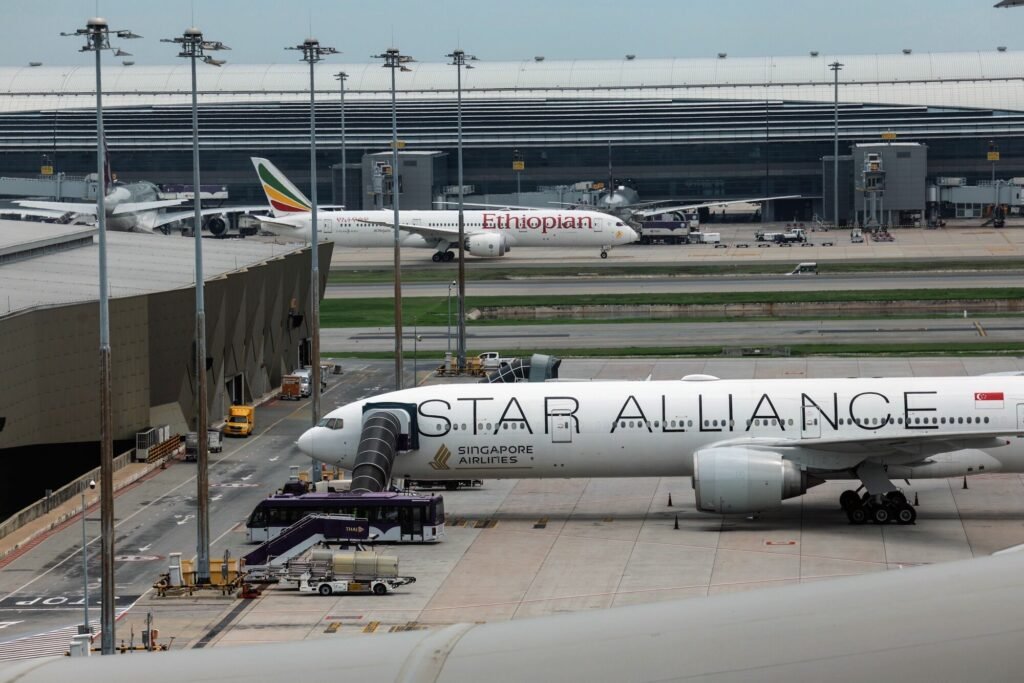
You can also listen to this podcast on iono.fm here.
ADVERTISEMENT
CONTINUE READING BELOW
JEREMY MAGGS: It’s been a bumpy year for global aviation, with passenger numbers soaring and premium class travel surging ahead. The International Air Transport Association releasing its 2024 World Air Transport Statistics report. Let me tell you, it’s a goldmine of insight into how, where and what the world is flying.
I want to discuss these trends and what they mean for travellers, airlines and regional markets. I’m joined by well-known aviation analyst and commentator Linden Birns. Linden, premium class, this is interesting, growing by nearly 12% last year – that’s faster than many economies. Do you think it’s a post-Covid boom, or a deeper shift maybe in airline economics?
LINDEN BIRNS: Hi Jeremy, I think it’s a combination of two things, and it’s where that growth is taking place. Significantly, that boom in premium class travel is happening in Asia-Pacific. It’s growing at 28%, which is phenomenal. I think if you look across not just last year’s numbers, but also this year, what’s been happening, of course, this year is a very different picture globally because of the three Ts: Trump, trade and tariffs.
Asia-Pacific seems to be, I wouldn’t say immune, but more immune than anyone else. It seems to be a very resilient market.
A lot of strong intra-Asia-Pacific trade and commerce and tourism that’s happening. So we’re seeing there that in the premium market, there were about 21 million premium passengers. It was a year-on-year growth of 22.8% last year, just in that market. We’re seeing similar this year. If we look at June’s numbers for this year, year-on-year, it’s 9% up on the same last year.
Read: The world’s biggest passenger planes keep breaking down
Whereas if we look at Africa, for example, we’re a much smaller market. We only represent about 2% of the global market. We’ve got just under 4 million premium travellers who travelled with African airlines last year, and we’re seeing that market growing at around 5.5% for premium travel, and we’re seeing about 11% for economy travellers. Fifty seven million economy travellers travelled with African airlines last year. But again, if we look across it this year, it’s a lot slower.
Listen: FlySafair strike reveals cracks in SA’s fragile airline market
We’ve seen only a 0.8% rise in demand for passenger travel in the African market in June this year compared to last year. A lot of that’s down to, again, increased competition. The fact that within Africa, we’ve got a very low propensity to travel because of the low per capita income compared to places like Asia-Pacific, Europe and North America.
JEREMY MAGGS: Linden, that observation is in the data, because there are 3.3 million passengers on the Johannesburg to Cape Town route, it’s Africa’s busiest route. It tells us a lot then about intra-country versus cross-border travel on the continent and where the balance is.
LINDEN BIRNS: Yeah, absolutely. I was actually surprised by that number. There are more people who travel between Cape Town and Joburg than travel between New York JFK and Los Angeles.
JEREMY MAGGS: Wow.
LINDEN BIRNS: Last year, they only had 2.2 million passengers on that route. So, yes, it’s a real headache. This actually plays into the broader picture. When the president [Cyril Ramaphosa] says, we need to pivot trade and look at intra-Africa and the African Continental Free Trade Area, [you say] yeah, that’s all very good but can people in those markets afford our products and services?
We’re seeing that reflected, as it is, in demand for air travel and for air cargo. Because they do reflect, they’re a very handy mirror or barometer, whichever analogy you want to use, of the state of trade, commerce and economic health.
JEREMY MAGGS: So Linden, in that respect then, and based on your observation and these trends, where should South Africa be focusing its efforts in order to stay relevant and competitive?
LINDEN BIRNS: I think we need to be doing more everywhere, frankly. What’s a little disconcerting is that the Africa-Asia trade lane was looking very healthy until about May this year. Then suddenly it started reversing. We’ve seen those numbers declining for two consecutive months now. So that’s not a good sign. I don’t know to what extent that’s influenced by seasonality, if it’s to do with the holidays or perishable good exports, I’m not quite sure what it is, but it’s not looking great.
You’d think that we would be a very attractive source market as well as a destination, obviously, for travellers, because of the low cost, the weak rand, and therefore the great value-for-money proposition that we offer for foreign travellers.
ADVERTISEMENT:
CONTINUE READING BELOW
You would also think that we’d be a competitive market for investment. But obviously there are more fundamental issues here that we’ve got to deal with in South Africa. We know what they are, to do with crime, corruption, governance, accountability. It’s all very good having all the other things, if we don’t have those, people aren’t going to come.
Listen: SA’s crumbling airports leave airlines scrambling
JEREMY MAGGS: Interesting to see the Boeing 737 and the Airbus A320 families remain the workhorses of aviation. Why are airlines still leaning so heavily on these two narrowbody jets? Is there no other alternative?
LINDEN BIRNS: I think we’re actually going to see even more use of the narrowbody aircraft, as Boeing and Airbus start filling up their order books. The only other viable alternative in the same category, and we’re talking about aircraft in the 150 to 200 seat bracket, the Brazilians with Embraer make aircraft up to about 125, 130 seats. The only other manufacturer that’s looking at breaking into that market is Comac [Commercial Aircraft Corporation of China]. But the aircraft, first of all, is not yet fully certified and it’s not certified outside of China.
I think there’s going to be an issue around how do they break through the resistance and the inertia in the market. They’re going to have to satisfy the banks that those are solid investments, that they’ll hold their residual value. They’ll have to demonstrate to operators that they have good customer support and that there are deep supply lines.
Read: Boeing CEO no stranger to crisis as 787 crash poses new test
It’s already a frustration in the industry at the moment with a supply chain crisis. You can wait up to three years for some aircraft parts at the moment. That’s also why we’re seeing a lot of the older 737s and A320s remaining in service longer than they would have, because the manufacturers aren’t able to turn them out at the tempo they would have preferred to.
They were hoping to be producing them at around about 60 a month each, but they’re down currently at about 30 and 40. That’s meaning that airlines have to keep older aircraft in service for longer than they’d originally intended.
JEREMY MAGGS: Linden, just a quick one in conclusion. Middle East has the highest share of premium passengers. Latin America, Europe, North America all seeing premium travel outpace economy. So fair to say then, that business travel is back now with a vengeance, or at least being redefined in one way or another?
LINDEN BIRNS: I think so. Certainly, last year, remember this report is 2024 numbers and that’s why I qualified it, saying a lot has changed since then. Let’s see how this year pans out. It will be fascinating to see if that buoyancy and optimism that characterised last year, in terms of trade and commerce, continues and that activity.
People obviously still see a lot of value in premium travel. It’s a very competitive space.
As South Africans, I think we are seeing it becoming more and more expensive, relatively speaking. But obviously, for everyone else, that’s seen as a good value proposition.
JEREMY MAGGS: Linden Birns, as always, thank you very much indeed.
Read: These are the world’s busiest airports
Follow Moneyweb’s in-depth finance and business news on WhatsApp here.
Asia Travel Pulse
Thailand Focuses on Luxury Tourism to Maximize Growth Amid Regional Challenges
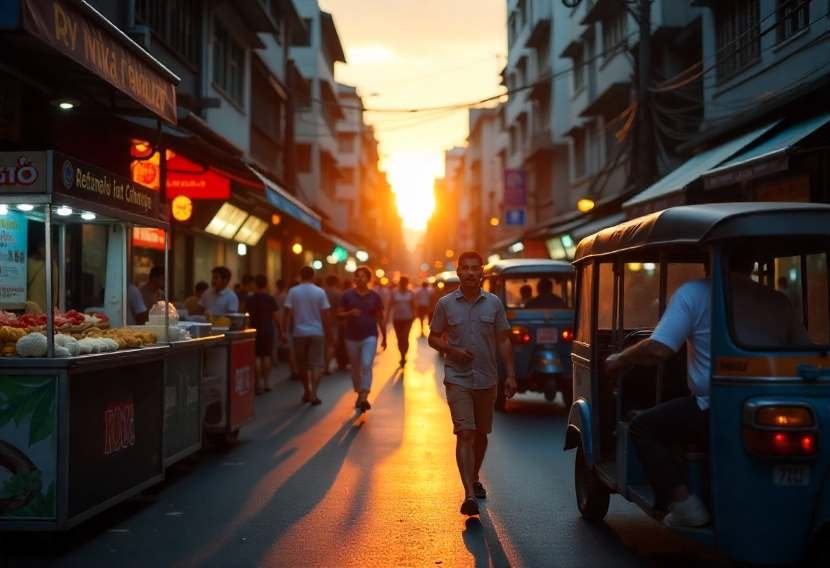
Tuesday, August 5, 2025
Thailand has reached an unprecedented milestone, outpacing its tourism peak of 40 million visitors. But the country now faces the challenge of adapting to the evolving global tourism landscape. The growing number of affluent travelers from the Asia-Pacific region, particularly from countries like China and India, presents a unique opportunity for Thailand’s luxury tourism sector to thrive. However, experts argue that the country must implement a comprehensive strategy to capitalize on this rising demand and maintain competitiveness with other regional tourism giants.
In a bid to tap into this lucrative market, Thailand is being urged to embrace targeted luxury marketing strategies, alongside new public-private partnerships. This approach is essential to attract high-spending tourists, particularly those in the upper-middle and affluent classes across the Asia-Pacific region, who are increasingly opting for regional travel experiences. Despite these opportunities, Thailand’s tourism sector faces challenges, including the delay of key legislation that could enhance the country’s appeal as a luxury destination.
The delay in passing the entertainment complex bill has been highlighted as a major obstacle, as it prevents Thailand from keeping pace with other emerging destinations in the region. Countries such as Singapore, the UAE, and Vietnam have already made significant investments in integrated resorts and luxury tourism, creating world-class experiences for affluent travelers. Meanwhile, Thailand is at risk of falling behind, missing out on the chance to leverage its tourism strengths such as hospitality, wellness, and cultural offerings.
Luxury Tourism in the Asia-Pacific Region: A Growing Market
The Asia-Pacific region, which generated over 648 million tourism trips last year, is expected to continue its growth trajectory, with projections indicating nearly 700 million trips this year and over 800 million by 2027. The region’s expanding middle class, particularly in India and China, is fueling demand for luxury travel experiences both within Asia and internationally.
China alone boasts over 6.2 million affluent individuals, along with 168 million people in the upper-middle class, making it a key driver of luxury tourism. As these travelers increasingly seek high-end tourism experiences, Thailand, with its rich cultural heritage, luxurious resorts, and warm hospitality, is well-positioned to capture a share of this market. However, despite Bangkok’s status as one of the most visited cities globally, the country faces hurdles, including a decline in Chinese tourist arrivals due to perceived safety issues, such as border scams and regional tensions.
The Road Ahead: Integrating Resorts and Addressing Safety Concerns
In the short term, Thailand must focus on addressing these safety concerns, which are a top priority for high-net-worth individuals. The government is encouraged to enhance tourism promotion efforts, utilizing global celebrities and influencers to change negative perceptions. Additionally, cracking down on illegal activities, such as scams targeting tourists, is crucial to ensuring a secure environment for visitors.
Moreover, the tourism sector would benefit from the enhancement of Thailand’s official tourism websites, making them more user-friendly and appealing to international audiences. Drawing inspiration from successful national tourism websites such as that of Japan, Thailand could significantly improve how information is accessed by prospective travelers.
The focus on integrated resorts is another key area of development for the country. Integrated resorts, which combine luxury hotels, entertainment venues, wellness centers, and gaming facilities, are crucial to attracting affluent tourists seeking diverse and high-quality experiences. Thailand has the opportunity to leverage its strengths and build on successful models from other destinations, including the latest projects in Macau and Singapore. However, the delay in passing the entertainment complex bill is limiting the country’s ability to create these integrated resorts, leaving it vulnerable to competition from other destinations that have already made substantial investments in their tourism infrastructure.
Looking to the Future: A Strategic Shift for Thailand’s Luxury Tourism
To compete effectively with the likes of Singapore, the UAE, and emerging destinations such as Vietnam, Thailand must accelerate its efforts in the luxury tourism sector. This includes developing new infrastructure, expanding public-private partnerships, and creating unique, world-class experiences for travelers. Integrated resorts, similar to those being developed in Singapore’s Sentosa and Marina Bay Sands, as well as in Vietnam, could play a pivotal role in boosting the country’s appeal.
As Thailand looks to strengthen its position as a premier destination for luxury tourism, the role of private investors, such as Galaxy Entertainment Group, is critical. These companies can complement the country’s existing tourism strengths and help build attractions that appeal to the growing demand for high-end travel experiences in the region.
Despite the challenges, Thailand remains optimistic about its potential in the luxury tourism market. With the right strategic investments and a focus on safety and unique offerings, the country can continue to attract affluent travelers and maintain its competitive edge in the Asia-Pacific tourism industry.
Asia Travel Pulse
Cavin Loh’s Appointment as Regional General Manager Marks a New Chapter in Plaza Premium Group’s Expansion Strategy for Asia’s Rapidly Growing Travel Market
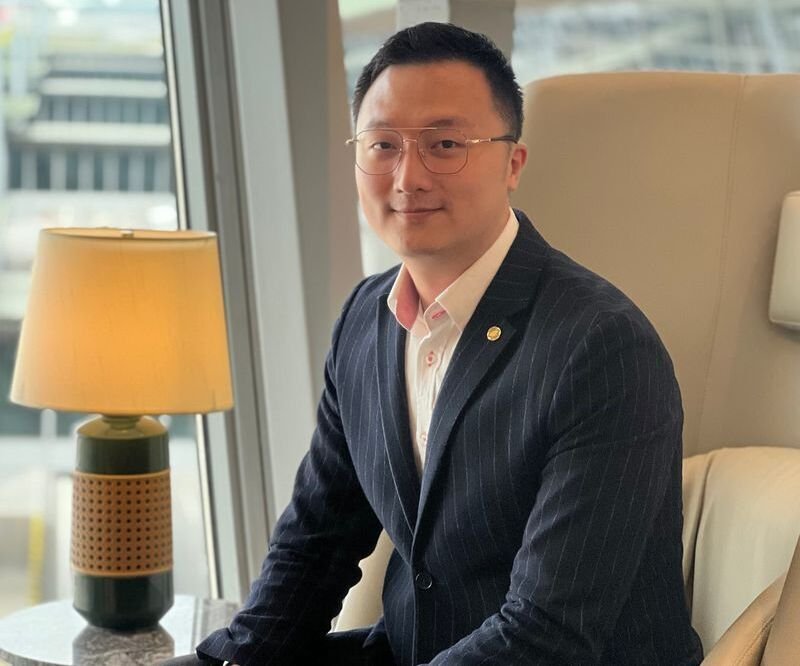
Tuesday, August 5, 2025
Cavin Loh’s promotion to Regional General Manager signals an exciting new phase for Plaza Premium Group as it pushes further into Asia’s booming travel scene. With more than 15 years in hospitality and airport services, Loh brings the experience needed to propel growth across Southeast Asia, where travel volume keeps rising. His track record and in-depth knowledge of the region’s operations will help the company strengthen its foothold in Malaysia, Indonesia, Cambodia, and Thailand, perfectly aligning it with surging demand for premium airport services. Loh’s clear strategic vision will guide the Group in spotting and seizing the travel trends shaping Southeast Asia.
Plaza Premium Group (PPG), a leader in premium airport services, has recently announced the promotion of Cavin Loh to the position of Regional General Manager for Southeast Asia, overseeing Malaysia, Indonesia, Cambodia, and Thailand. With a wealth of over 15 years in the hospitality and airport services industries, Loh has been a key member of the Plaza Premium Group team for more than a decade. His deep expertise and dedication to excellence have been critical in advancing the company’s regional success.
A Proven Leader in the Hospitality Industry
Cavin Loh’s career trajectory at PPG has been marked by a series of leadership roles that have strengthened his strategic insight into the regional market dynamics. Prior to this promotion, he served as the Area General Manager and Regional Commercial Director for Southeast Asia. These roles have equipped him with a comprehensive understanding of operations across diverse Southeast Asian markets, ensuring that PPG’s services are tailored to meet the distinct needs of each region.
In his new role, Loh will drive the continued growth, operational efficiency, and commercial success of Plaza Premium Group in Southeast Asia. His leadership will align the company’s objectives with its global strategies, all while focusing on localized adaptations that cater to specific market demands.
Strategic Focus on Operational Excellence and Growth
As Regional General Manager, Loh’s primary objective will be to enhance PPG’s presence across the Southeast Asian airports. The role will involve overseeing the strategic direction of the company’s services, ensuring operational excellence, and maximizing commercial performance. By leveraging his in-depth knowledge of the market, Loh is expected to guide PPG’s expansion efforts in these high-growth regions, aligning them with global trends in the travel and airport service sectors.
Loh’s leadership approach is grounded in his analytical thinking and ability to deliver measurable business outcomes. He is highly regarded for his long-term strategic planning, which has consistently contributed to PPG’s business development and the continuous evolution of its premium travel services. This strategy-driven approach has been pivotal in shaping the company’s competitive edge in Southeast Asia.
A Strong Foundation in Hospitality
Loh’s journey in the hospitality sector began in the hotel industry, where he honed a strong foundation in customer service and operational management. These experiences have not only shaped his leadership style but have also enabled him to better understand the complexities of the travel and tourism industry, a crucial asset in his role at PPG. His extensive background allows him to bridge the gap between hospitality services and the evolving needs of the airport sector, ensuring that PPG’s services remain in tune with passenger expectations.
His approach to leadership emphasizes customer-centricity, operational efficiency, and a commitment to continuous improvement—all values that align with Plaza Premium Group’s mission to make travel better for passengers around the world. Under his guidance, PPG is poised to continue its expansion, providing travelers with unparalleled airport lounge experiences and enhancing the overall travel journey.
Personal Passions and Leadership Philosophy
Outside of his professional achievements, Cavin Loh is known for his passion for travel and sports, interests that resonate with the company’s dynamic and forward-thinking culture. His personal commitment to service excellence mirrors Plaza Premium Group’s dedication to improving travel experiences for passengers globally.
As Southeast Asia remains one of the fastest-growing regions in the global travel landscape, the appointment of Cavin Loh underscores Plaza Premium Group’s continued investment in leadership talent capable of navigating the complex demands of the travel industry. With his strategic vision and proven track record, Loh’s leadership is expected to bolster PPG’s standing as a premium service provider in airports throughout Southeast Asia.
Cavin Loh’s new role as Regional General Manager signals a key moment for Plaza Premium Group as it pursues its growth strategy for Southeast Asia. His strong leadership will help the company capitalize on the region’s booming travel demand and deepen its market reach.
Under Loh’s guidance, Plaza Premium Group can continue expanding its presence across Southeast Asia. With years of hospitality experience and keen insights into local market trends, he is prepared to fine-tune the company’s services to match evolving traveler expectations. As demand for travel grows, Loh will shape strategies that ensure superior airport experiences, lifting service levels in Malaysia, Indonesia, Cambodia, and Thailand.
-

 Brand Stories2 weeks ago
Brand Stories2 weeks agoBloom Hotels: A Modern Vision of Hospitality Redefining Travel
-

 Brand Stories1 week ago
Brand Stories1 week agoCheQin.ai sets a new standard for hotel booking with its AI capabilities: empowering travellers to bargain, choose the best, and book with clarity.
-

 Destinations & Things To Do2 weeks ago
Destinations & Things To Do2 weeks agoUntouched Destinations: Stunning Hidden Gems You Must Visit
-

 Destinations & Things To Do1 week ago
Destinations & Things To Do1 week agoThis Hidden Beach in India Glows at Night-But Only in One Secret Season
-

 AI in Travel2 weeks ago
AI in Travel2 weeks agoAI Travel Revolution: Must-Have Guide to the Best Experience
-

 Brand Stories1 month ago
Brand Stories1 month agoVoice AI Startup ElevenLabs Plans to Add Hubs Around the World
-

 Brand Stories4 weeks ago
Brand Stories4 weeks agoHow Elon Musk’s rogue Grok chatbot became a cautionary AI tale
-

 Asia Travel Pulse1 month ago
Asia Travel Pulse1 month agoLooking For Adventure In Asia? Here Are 7 Epic Destinations You Need To Experience At Least Once – Zee News
-

 AI in Travel1 month ago
AI in Travel1 month ago‘Will AI take my job?’ A trip to a Beijing fortune-telling bar to see what lies ahead | China
-

 Brand Stories2 weeks ago
Brand Stories2 weeks agoContactless Hospitality: Why Remote Management Technology Is Key to Seamless Guest Experiences

